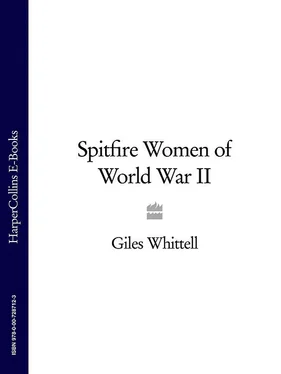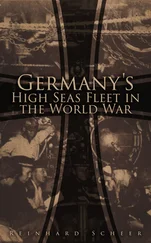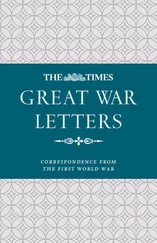The war by this time was two years old; two years in which tenacity in the air had saved Britain from an invasion across the Channel, and superiority in the air had become Churchill’s obsession. On 12 July 1941 he had sent a note to Sir Charles Craven, Secretary of State for Air, under the command ‘Action this day’. It ended with this peroration:
We must aim at nothing less than having an Air Force twice as strong as the German Air Force by the end of 1942. This ought not to be impossible if a renewed vast effort is made now. It is the very least that can be contemplated, since no other way of winning the war has yet been proposed.
As a direct result of this memo, a gigantic chain of production was willed into being that would eventually rain fire on Dresden and give Eisenhower the air support without which D-Day would have been in vain. At one end of this chain were the bauxite mines of the British Empire and the Americas, from which the raw material for aluminium was dug in ever-increasing quantities. The next link was one of the great flukes of economic history – the astonishing potential for aluminium production created by the building of the huge Bonneville and Grand Coulee dams across the Columbia River in the American north-west in the depths of the Depression. Aluminium is produced by electrolysis; without the dams the Allies would have been hard-pressed to build the air force Churchill was demanding. As it was, from Everett in Washington state, now home town to the Boeing 747, to Castle Bromwich and Southampton, the miraculous silver metal, which in the nineteenth century had been as costly as gold, was banged and moulded into more aircraft in 1944 alone than Germany could produce in the entire war. Initially their cost was met from the Lend Lease loans signed by Roosevelt from October 1941 onwards as a way of aiding Britain without violating US neutrality. Then Pearl Harbor consigned that neutrality to history and rendered the whole question of payment secondary. Pilots were queuing up to fly the aircraft into combat. All that was missing were people to deliver them to the front line.
The first beneficiaries of this desperate need for ferry pilots were, inevitably, men. Thirty of them had been recruited in September 1939 on the initiative of Gerard ‘Pop’ d’Erlanger, an air-minded young merchant banker with an immaculate parting and a strong sense of duty. D’Erlanger was also a director of British Airways and a keen private pilot, and had been worrying for at least a year that hostilities in Europe would bring an acute pilot shortage if flyers like himself could not be used.
‘Dear Balfour,’ he had written in May 1938 to Harold Balfour, then Parliamentary Under Secretary for Air, ‘I know how busy you must be and therefore have hesitated in worrying you, but there is a question which for some time has been puzzling me …’. Was there a reservists’ Air Force in which people like him could enlist? The answer was no, and so, in August 1939, d’Erlanger suggested forming such a unit from holders of private licences with at least 250 hours in the air. The Director General of Civil Aviation, Sir Francis Shelmerdine, agreed, and put d’Erlanger in charge of it. One thousand licence-holders were contacted. One hundred of them replied, and thirty were selected after interviews and flight tests held at British Airways’ wartime base at Whitchurch, outside Bristol. The first intake included a publican, a motorcycling champion and an animal lover who had recently flown back from Africa with two new pets – a cheetah and a chimpanzee.
D’Erlanger had envisaged the ATA as an aerial courier service for VIPs, medicines and the wounded, but even in the Phoney War his pilots were more in demand for ferrying. They called themselves the Ancient and Tattered Airmen because it was a more amusing explanation for their ATA badges than the official one, and because, to a great extent, it was true. In a rumpled sort of way, the ATA was the most exclusive flying outfit of the war. The name was an anomaly, The Times ’ aeronautical correspondent noted in 1941, and ‘the body itself one of those curious, almost romantic improvisations which the special demands of war sometimes call into existence’.
To be eligible for membership you had to be ineligible for the RAF but still able to fly. That ruled out clear-eyed, coordinated, brave young men; but it ruled in a different sort of elite; one of oddballs, intellectuals, artists, bank managers, civil servants, wounded veterans and Francis ‘Frankie’ Francis – flying ace, backgammon ace, ex-Guards officer and raven-headed millionaire from the north shore of Lake Geneva. There, in peacetime, he had maintained his own Sikorsky biplane for joyrides over Gstaad and the Haute-Savoie. Come the war, he would have chafed at returning to a military hierarchy but among fellow civilians anxious only to fly, he was adored. It did his reputation no harm that he had the looks and torso of a film star and would strip to the waist for physical jerks whenever the sun came out.
For the winter of 1939–40 the men were seconded to existing RAF ferry ‘pools’ at Hucknall, near Nottingham, and Filton, east of Bristol – the future birthplace of Concorde. Here they got their hands on operational aircraft and were even permitted to ferry them to France. Women, by contrast, were considered by the RAF’s top brass to be unworthy of either privilege, physically or temperamentally. They were never formally attached to RAF units and were based in their own all-civilian pools from the start, which came with the recruitment of the first eight pilots in January 1940. At first the only RAF machines they were allowed to fly were trainers – open cockpit De Havilland Moths, and, later, Miles Magisters (with a blistering top speed of just 132 mph).
The women had to struggle for nearly two years to be allowed in fighters, and five before they started flying them to Europe. Yet it was clear from the outset that despite their relative youth and their nickname (the ‘Always Terrified Airwomen’), they were altogether more formidable than the Ancient and Tattered.
The simple fact of having learned to fly before the war made them an elite within an elite. Their eventual success in flying operational aircraft in the teeth of RAF resistance only compounded their kudos. They were marshalled by the daughter of a prominent Tory MP, championed by a powerful handful of ‘pro-women men’, and led through the air by the likes of Lettice Curtis. They were a close-knit group, barely twenty-strong. Many knew each other from Stag Lane, Heston and Brooklands – London’s most famous pre-war flying clubs. Most were from monied backgrounds, with accents and assumptions to match. Those that were not were ruthlessly frugal. Some were well known, especially to the society editors of the Daily Sketch and the Picture Post . They were ‘It Girls’ doing their bit, but there was nothing remotely superficial about their courage or their motivation. On the contrary, their defining traits were inner steel and a fierce if usually unspoken patriotism.
Later ATA recruits found some of these pioneers downright imperious. Margaret Fairweather, the first woman to fly a Spitfire, was nicknamed the Cold Front. Lettice Curtis was known to everyone in the ATA but that did not mean she would talk to them. (One new arrival from South America remembers handing her a letter of introduction and being stunned when ‘she read it, said nothing and turned away’.) Another relative novice who had to spend a week at the first all-women’s ferry pool at Hamble, near Southampton, called it ‘the loneliest time I’ve ever spent’.
But the exigencies of war – and especially the worsening shortage of pilots as the air war intensified – meant that all-comers would eventually have to be accepted by the pioneers, just as the pioneers had been accepted by the men.
Читать дальше












